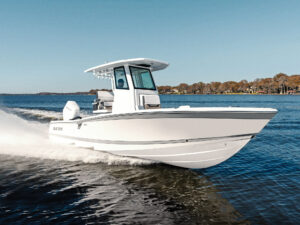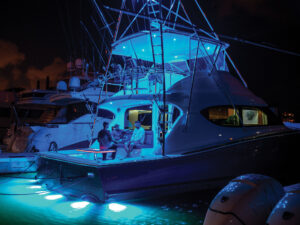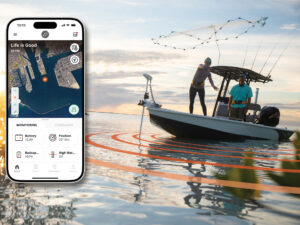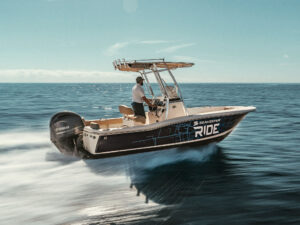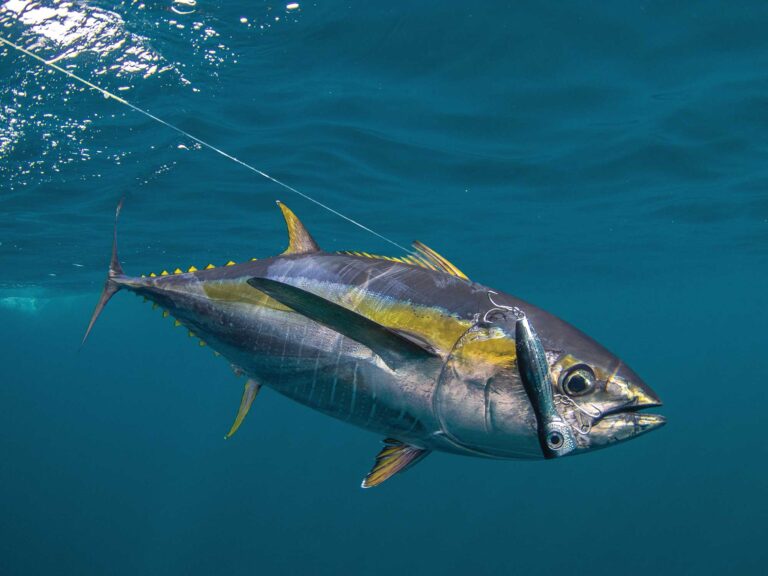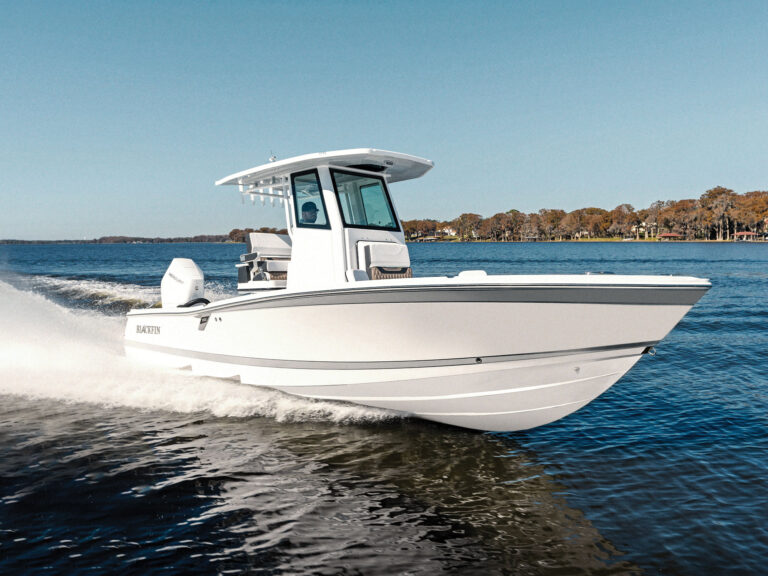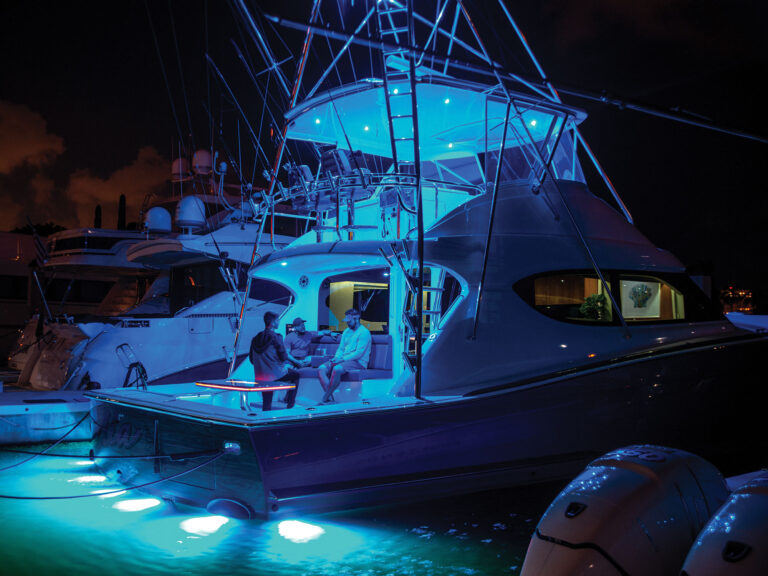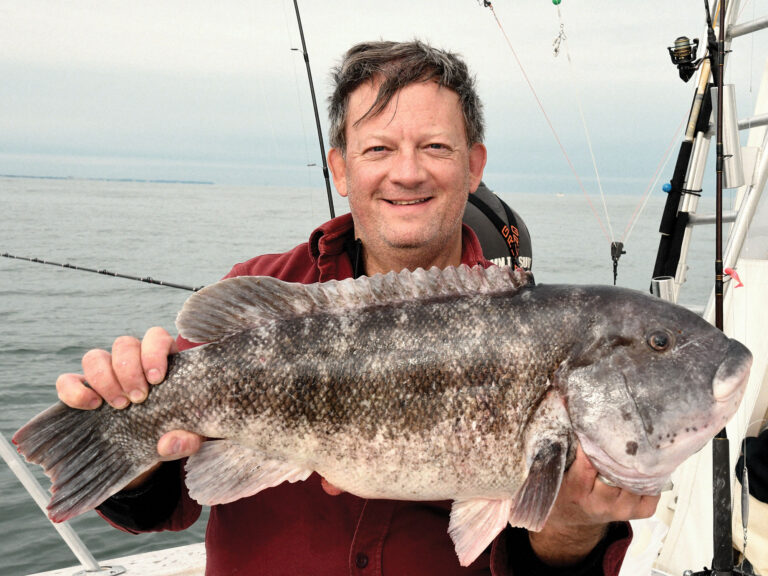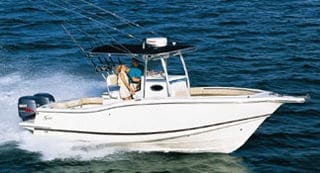
| The large cockpit should satisfy most offshore types. |
For Scout’s many fans, the new 280 Sportfish has been a long time coming. The company earned its reputation as a high-quality builder as the public got to know its line of smaller skiffs and bay boats. Sure, the 280 Abaco expanded the line into the realm of larger boats when it was introduced a couple of years ago, but the hardcore fishermen have been patiently awaiting a no-nonsense fish boat, and it has finally arrived.
The 280 is pure center console, and has Scout’s usual array of clever design touches to maximize efficiency. Like all of the Scouts we’ve tested, the 280 has excellent fit-and-finish, and is built with the highest quality resins and gelcoat. The hull is all hand-laid fiberglass, and the rest of the boat is fully composite-cored. The fiberglass stringer system extends into the integrated transom area, a system Scout calls the “Strata-Mount.”It is designed to spread the stress generated by the engines throughout the entire hull. The hull is filled with closed-cell foam for maximum flotation, and Scout backs the boat with a transferable seven-year warranty.
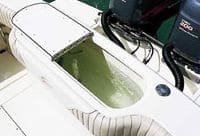
The large cockpit should satisfy most offshore types, with coaming pads running 360 degrees around the boat. Live-baiters will appreciate the 30-gallon live well built into the transom bulkhead. The lighted well comes with a grill supply system wherein water is introduced evenly throughout the water column, a very nice touch. There are two good-sized fishboxes in the deck, running fore and aft. These open on piano hinges and gas-assisted rams, and have sturdy rubber gasketing all the way around.
There are two storage compartments in the transom bulkhead for holding loose gear, and the Y-valve for the head is located in the starboard box. A large lazarette sits under the live well, and the bilge pumps, oil tanks and fuel valves are all accessed through a hatch under the well. The problem is, the hatch only raises a few inches before it hits the bottom of the well, so the opening is limited. With this setup, I could not reach the bilge pumps. A better arrangement might be to install some sort of removable hatch that would afford more access.
At the forward end of the cockpit, a step up takes you to the helm area. Two sub-deck rod-storage lockers built into the steps hold three rods per side, and five more rods will fit in holders welded onto the aft end of the leaning post/rocket launcher. The leaning post contains a full tackle center with three tackle drawers, a sink and cutting board. The rocket launcher seat contains a shallow storage tray.
| ¿ SPECIFICATIONS LOA: 28′ 6″ Beam: 9′ 5″ Hull weight: 4,100 lbs. Fuel: 208 gals. Water: 20 gals. Max. hp: 500 Base price w/twin 200-hp Yahama HPDI outboards: $84,714 |
The 280’s console features a large vertical surface for electronics flush-mounting, with a centerline helm, an acrylic windshield, and a couple of built-in drink holders. It’s a tight fit between the leaning post and the helm. The sub-console head compartment has a surprising 6′ 4″of headroom, and the optional VacuFlush head is hidden in a storage box-out of sight and out of the way until you need it. The boat’s batteries are down there too, where they are easily accessible. A cooler under the front console seat is perfect for holding cold drinks.
The Scout design team obviously took storage needs seriously when designing this boat, because the bow area contains very generous storage spaces. A huge in-deck storage box on the centerline will hold a lot of gear, and there are three more storage boxes in the raised seating area that wraps around the bow. A molded pulpit holds the anchor, and a low-profile stainless bow rail provides a handhold, yet remains out of the way for casting.
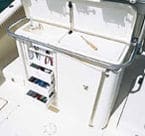
Mike Myers is the owner of Sandy Cove Marine Sales in Islamorada, Scout’s Florida Keys dealer, and we tested a 280 from his dealership. Unfortunately, our test day was a Chamber of Commerce type of day-flat calm and beautiful-so we can’t comment on the boat’s rough-water abilities. It is an excellent performer though, and is quick to plane and highly maneuverable. Yamaha’s own test numbers show a cruise speed of 36.6 mph at 4000 rpm with twin 200-hp HPDI outboards, and a top speed of 51.8 mph at 5500 rpm. At the 4000 rpm cruise, the HPDI’s are only burning a total of 19.6 gph.
The 280 is sure to please existing Scout fans, and win some new converts, as well. It is also bound to give the more established builders of larger center consoles a run for their money.
Scout Boats, Summerville, SC; (843) 821-0068; www.scoutboats.com.

